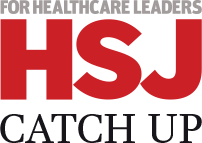As NHS England begins to allocate its £260m technology fund, there are many game changing benefits of electronic prescribing for acute trusts, writes Shaun O’Hanlon

Electronic prescribing in hospitals is an important part of Jeremy Hunt’s drive towards a paperless NHS
Electronic prescribing in hospitals is an important part of Jeremy Hunt’s drive towards a paperless NHS.
The technology fund announced by the health secretary last year will provide extra cash for trusts to replace their paper based systems with technology that cuts drug errors and makes patient care safer.
The fund has focused attention on the many benefits that paperless prescribing can bring, with the Treasury reportedly demanding a stringent minimum return on investment of 1.5 − in addition to clear clinical benefits − for successful bidders.
As NHS England starts contacting trusts with initial allocations from the fund, now is a good opportunity to consider how e-prescribing can help trusts meet the Treasury’s targets.
The systems trusts need
The good news is that evidence already exists to show that e-prescribing systems can help trusts realise huge cost and safety dividends.
To fully realise their ROI, trusts should ensure e-prescribing systems to support seamless care where primary and secondary care cross over from GP referral or accident and emergency admission, to acute care and home again.
‘Trusts should ensure e-prescribing systems to support seamless care’
When patients are admitted hospital doctors should be able to view their current drugs and allergies in the GP core record. This allows for safer, more accurate and complete care from day one thus avoiding the risk of critical medications being interrupted or delayed, which can lead to complications and longer hospital stays.
It also eliminates “patient ping pong” where medications are switched back and forth between different care settings and therapeutic agendas.
E-prescribing allows everyone to share the reasons for medication changes, helping different clinicians to give joined up care with the back-up of pharmacists’ specialist knowledge.
No delay
With e-prescribing there are minimal delays when patients are declared fit to return home because their discharge prescription is instantly sent to the clinical pharmacist to check and then on to the pharmacy to dispense via the same system. It can even go straight through to robotic dispensing for a quicker turnaround.
There is no delay in follow-up treatment from the GP either, because they receive an electronic discharge in the practice’s inbox with details of medication within 24 hours.
GPs tell us that the medication is the most important part of a discharge letter; it is vital if they are to provide safe continuing care.
Point of care mobile access is another must if e-prescribing is to work in hospitals where a constantly changing, 24 hour workforce moves across different areas.
Giving wards 3-4 mobile devices allows for maximum efficiency because it eliminates queues at computer terminals.
Doctors have vital clinical information at their fingertips to make prescribing decisions or update medication, while at the other end of the ward nurses can check medication, administer it to patients and click a button at the bedside to show it has been done.
Pros and cons
There are many cost cutting and clinical benefits to e-prescribing. They include:
- Integrating e-prescribing with clinical noting in hospitals encourages more efficient, evidence based and safer care because clinicians have access to the complete clinical record to make point of care decisions. It also helps them to plan managed care pathways for different conditions.
- It allows for much tighter supply management of drugs in hospitals, eliminating waste.
- It saves time. When a doctor prescribes a drug on the ward the prescription is immediately available for the clinical pharmacist to check on and complete the pharmacy fulfilment service and delivery to the ward. Pharmacists no longer need to search for charts to identify patients on new medications, freeing them up for patient care and medicine optimisation.
- An integrated e-prescribing system produces a rich source of data that commissioners can use to implement a common drug formulary across localities so that everyone, including GPs and acute clinicians, is prescribing from the same list. Working to an agreed limited drug list gives cost savings through bulk buying and reduced stock.
- It leads to improved governance and safety. For example, commissioners can restrict prescribing certain medications for certain conditions and require last line antibiotics to be approved by a consultant microbiologist to ensure true antimicrobial stewardship. Decision support software also provides a safety net to help junior doctors apply their newly acquired prescribing skills.
The same rich drug data source enables clinicians to look at local prescribing patterns for certain conditions and work out further cost savings.
‘The system needs to be user friendly and intuitive – a basic requirement that is often overlooked when commissioning new technology’
Perhaps most exciting of all, e-prescribing can enable more effective, evidence based care because it provides the data for clinicians to research the efficacy of treatments with local patient populations.
This is where I think the real power of clinical commissioning groups will lie, as they begin to lead an informed national debate on how to improve the nation’s health while making efficient use of our precious resources.
It is important to mention some of the challenges that trusts might face as they strive to maximise savings through swift and widespread adoption of e-prescribing.
The system needs to be user friendly with an intuitive interface – a basic requirement that is often overlooked when commissioning new technology.
An e-prescribing system might do all the clever stuff, but if it is too complex to use it will not be welcomed by staff who are used to paper notes and drug charts.
By making it user friendly you also minimise – but not completely eliminate – training needs. This is another important issue for hospitals with their high turnover of junior doctors and agency staff. Even a user friendly system will meet resistance if people do not fully understand it.
These issues are far outweighed by the clear return on investment and clinical benefits of e-prescribing, which will be an important game changer for the NHS.
Economic and clinical benefits of an integrated e-prescribing and pharmacy stock control system
Evidence shows that the savings can be startling. For example, for a trust in the North West with 25 wards, 800 beds, 110,000 admissions a year and an annual drugs budget of £23m, e-prescribing has the ability to facilitate:
- a reduction in prescribing errors by 66 per cent;
- a drop in clinical incidents by 63 per cent (from 11 to four in a six month period);
- a rise in accuracy of discharge medication prescriptions from 46 to 93 per cent; and
- annual recurring savings of over £2m (£5,698 a day).
The savings broken down:
- £88,800 for not using paper drug charts.
- £1.6m from the drug budget through increased formulary compliance.
- £57,300 in technician staff time (band 4).
- £79,488 in pharmacist staff time (band 6).
- £179,398 in nursing, clerical and doctor time.
- £14,916 from the increased use of patient’s own medicine.
Dr Shaun O’Hanlon is chief medical officer of the EMIS Group



























10 Readers' comments